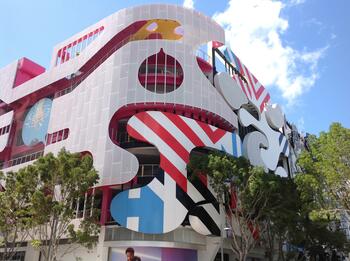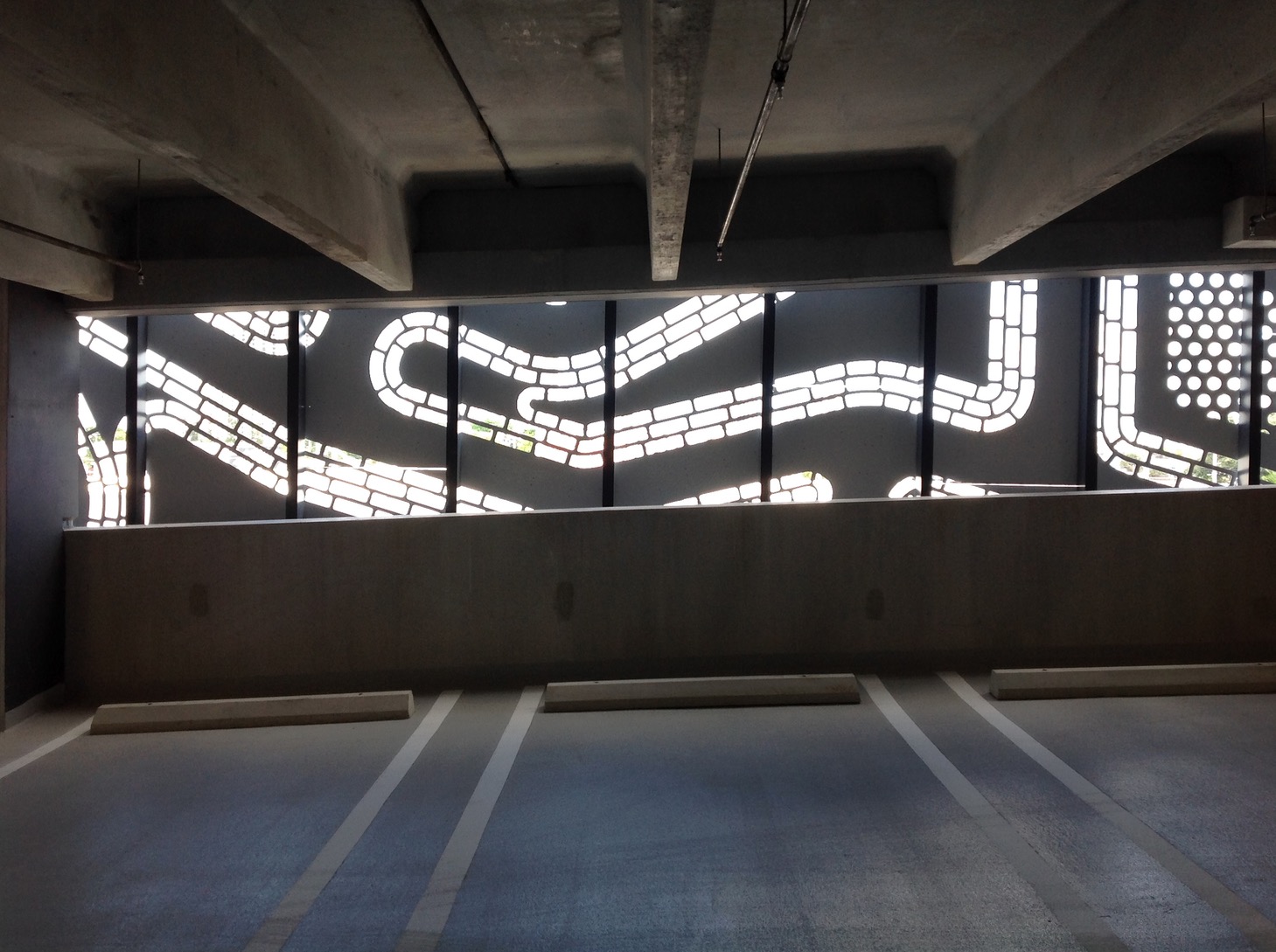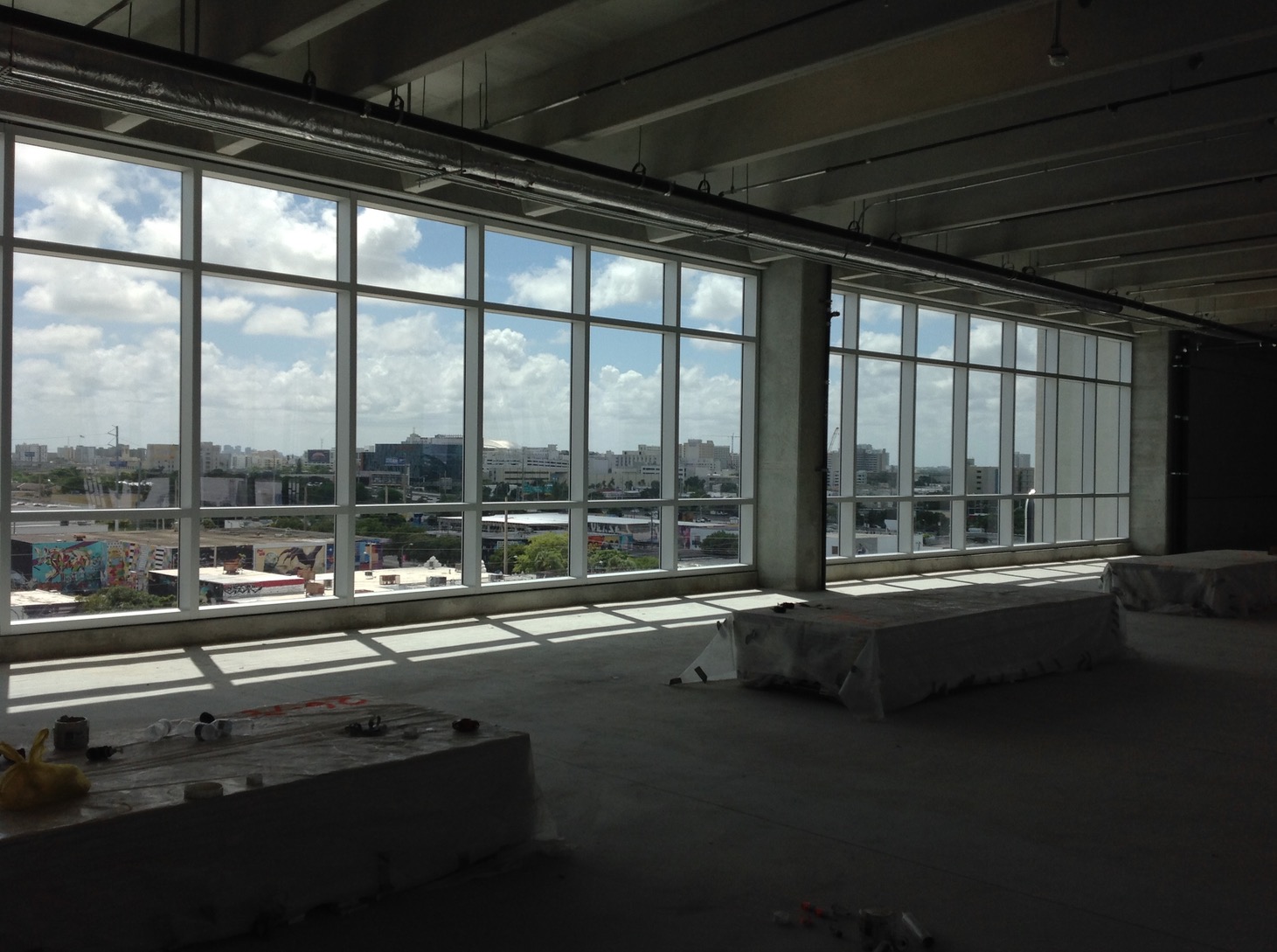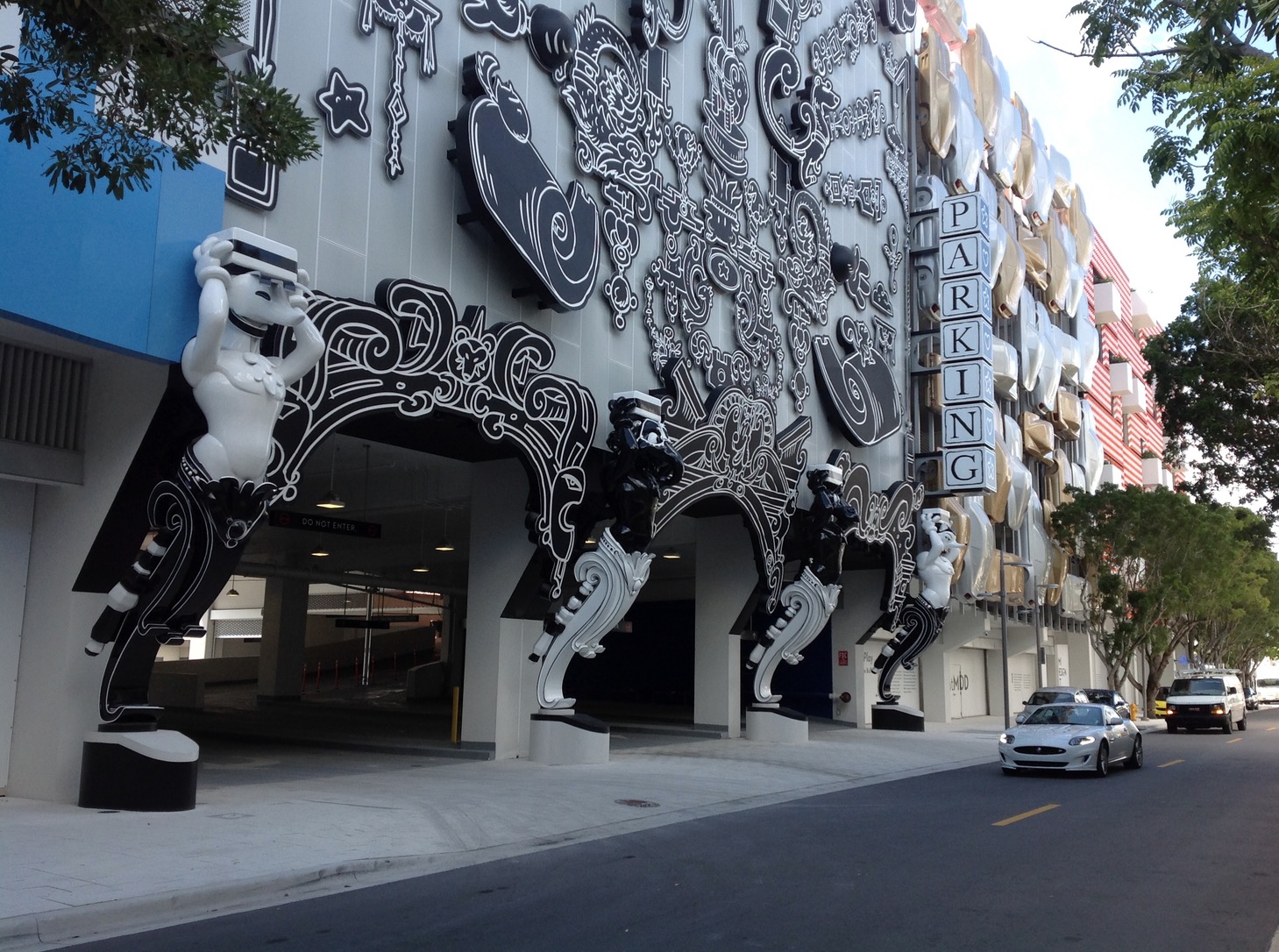
I scratched my head over this one for a while before I eventually came around. Give me a minute to come full circle here.




This is the latest architectural statement in Miami’s trendy Wynwood neighborhood. Faulders Studio and Wolfberg Alvarez Partners created an eight story garage meant to be a catalyst for the larger neighborhood. The high design celebrates the building on its own terms and is intended to be a cultural icon in its own right. The skin of the building is made of movable panels that can be swapped out with new art installations over time.






A multi story garage is expensive relative to a surface parking lot. Rigorously engineered steel and concrete come at a premium compared to a thin schmear of asphalt and a couple of curb cuts. Parking decks are justifiable when land values are sufficiently high. But a garage can also boost the value of surrounding real estate in a reciprocal fashion. Not coincidentally many nearby properties are owned and managed by the same small group of influential investors. This particular structure was financed through the sale of a vacant 1.25 acre lot that recently sold for $30M.




Multiple elevators, stairwells, electrical, plumbing, fire safety, and surveillance equipment all serve the building. But it comes at a price. This 428 vehicle garage cost $22M to construct. That’s about $51,400 per parking space. The next time you find yourself complaining about a $3 per hour parking fee let those numbers sink in.




The building is officially “mixed use.” That’s a term that used to signify residential and commercial activities in one envelope like a mom and pop shop with an apartment or two upstairs. But here one corner of the lower level is set aside for retail and a portion of the top floor is meant for office space. But the overwhelming majority of the structure is parking. There is no residential component. While Wynwood itself is a relatively walkable area the majority of Miami is auto dependent and those cars need to be accommodated. So a “mixed use” garage with a corner shop to activate the pedestrian realm and offices with city views makes sense in this context.







Not too far away in Miami’s Design District is the new garage for the Institute of Contemporary Art. Again, this building is a functional necessity that was leveraged into a neighborhood icon and embellished with distinctive art installations. This building is pure parking. While the museum across the street commissioned the structure the surrounding luxury brand shops benefit from the garage. The flow of prosperous visitors to the design district also supports the museum in a symbiotic two way feedback loop. The commodification of culture is unapologetically embraced in Miami.









1111 Lincoln Road in South Beach is Herzog and De Meuron’s origami brutalist garage-as-sculpture. The 40,000 square foot building provides 300 parking spaces. At $65M that’s $216K per car. To be fair there are a few retail shops on the ground floor and a luxury penthouse on the upper level, but it’s still pretty pricey for a garage. So why are property owners willing to spend that kind of money on such buildings? First, they’re required. You can’t not have parking and have a property succeed. Second, if a garage is magnificent instead of a hideous bunker it adds value to everything around it. In the right environment it makes financial sense.
The most fashionable places seem to embrace exposed mechanical systems and unfinished crude materials. Light and cavernous spaces (or alternatively, dark and intimate spaces) are in demand. Refinements come in the form of ephemeral furnishings and… humans. These buildings are beginning to emerge as quasi public venues that fill the void left behind by the larger anonymous metroplex. Parking garages are Miami’s new temples.
This piece first appeared on Granola Shotgun.
John Sanphillippo lives in San Francisco and blogs about urbanism, adaptation, and resilience at granolashotgun.com. He's a member of the Congress for New Urbanism, films videos for faircompanies.com, and is a regular contributor to Strongtowns.org. He earns his living by buying, renovating, and renting undervalued properties in places that have good long term prospects. He is a graduate of Rutgers University.












